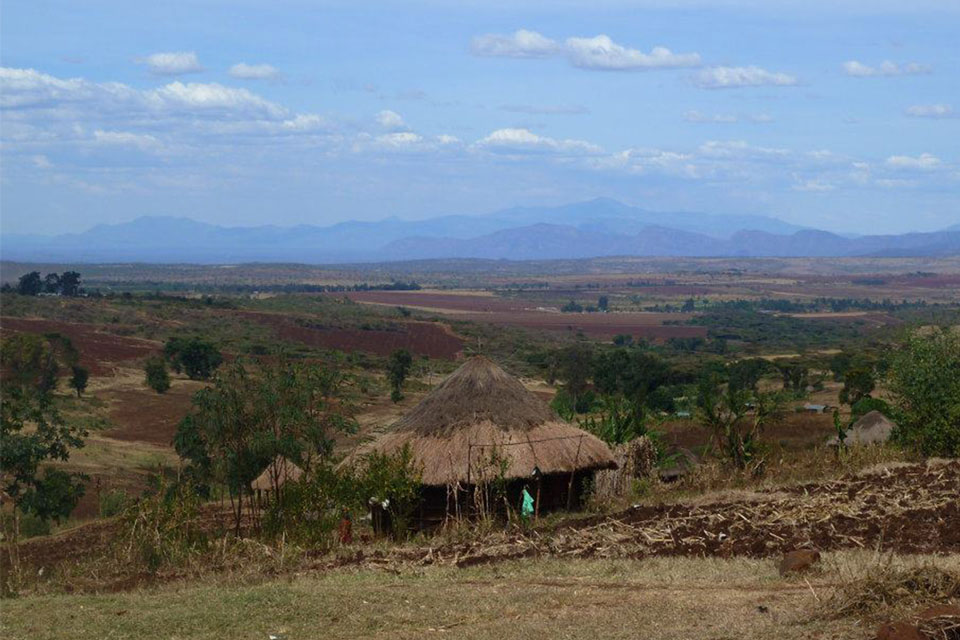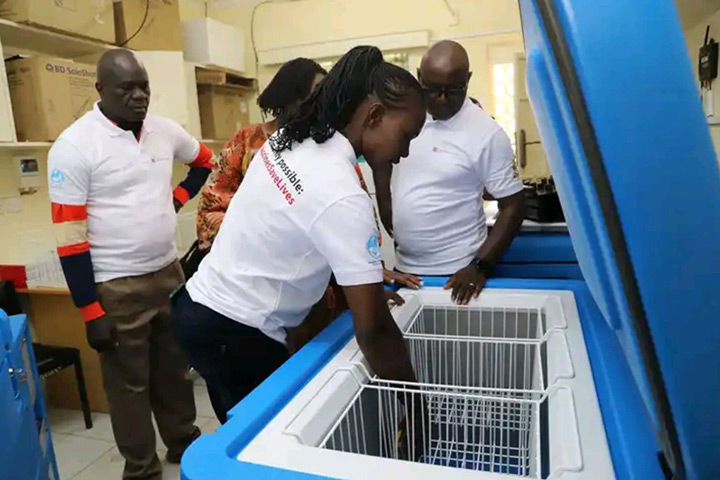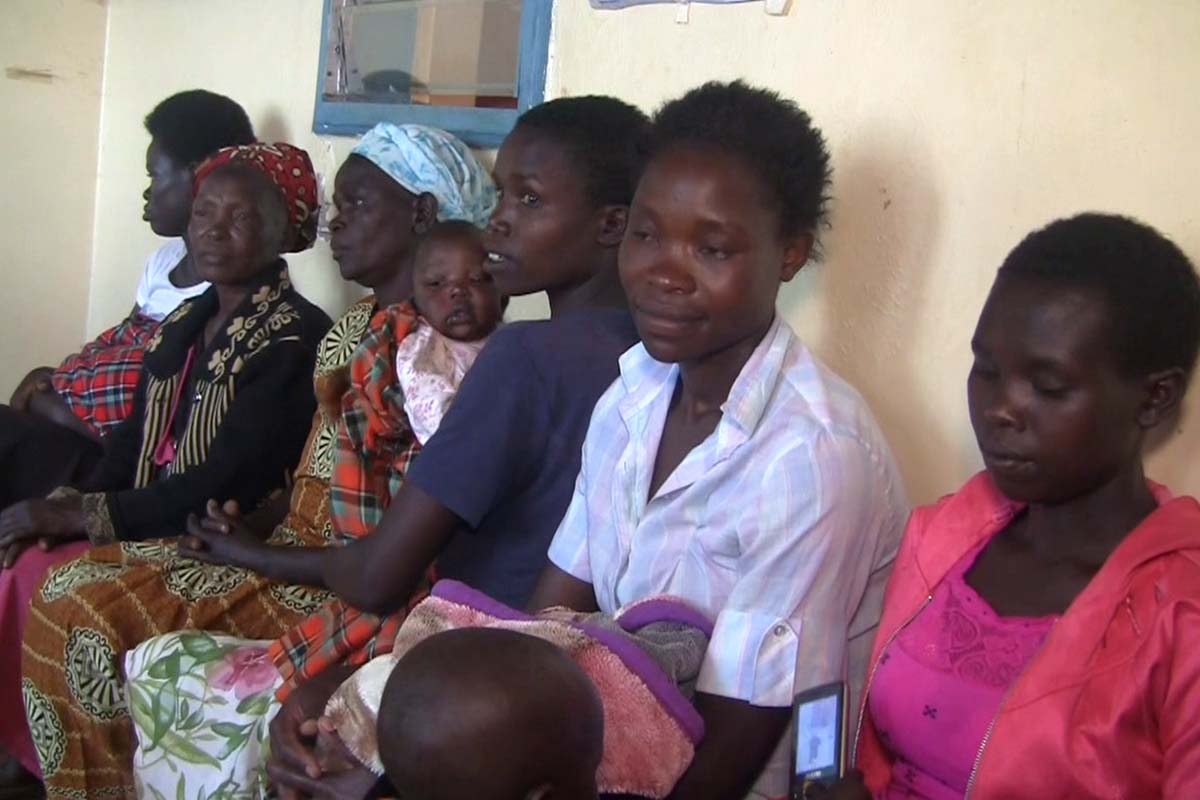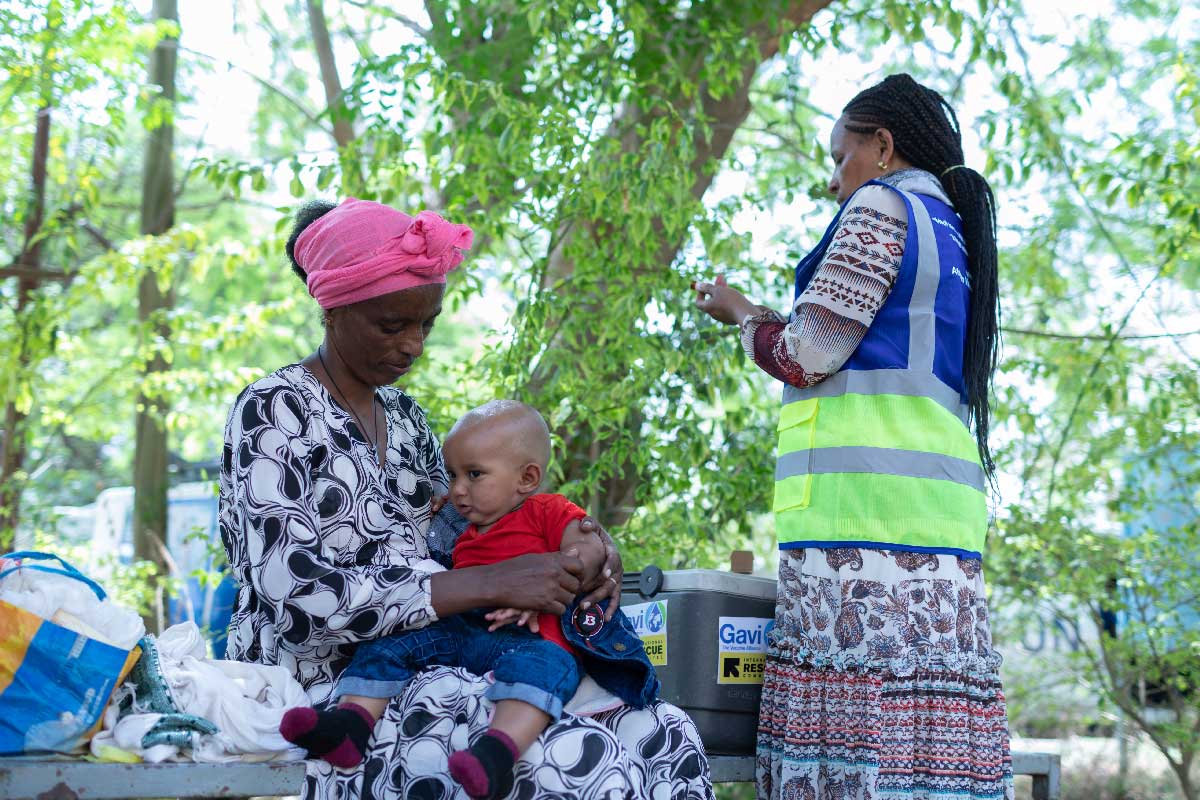Tamping down rabies risk at western Kenya's infamous dog market
The Lubao Dog Market in Kakamega is a hard, often violent place. One thing chairman Jonathan Shiundu is determined it won’t become, is a hub for rabies transmission.
- 5 November 2025
- 6 min read
- by Pius Sawa
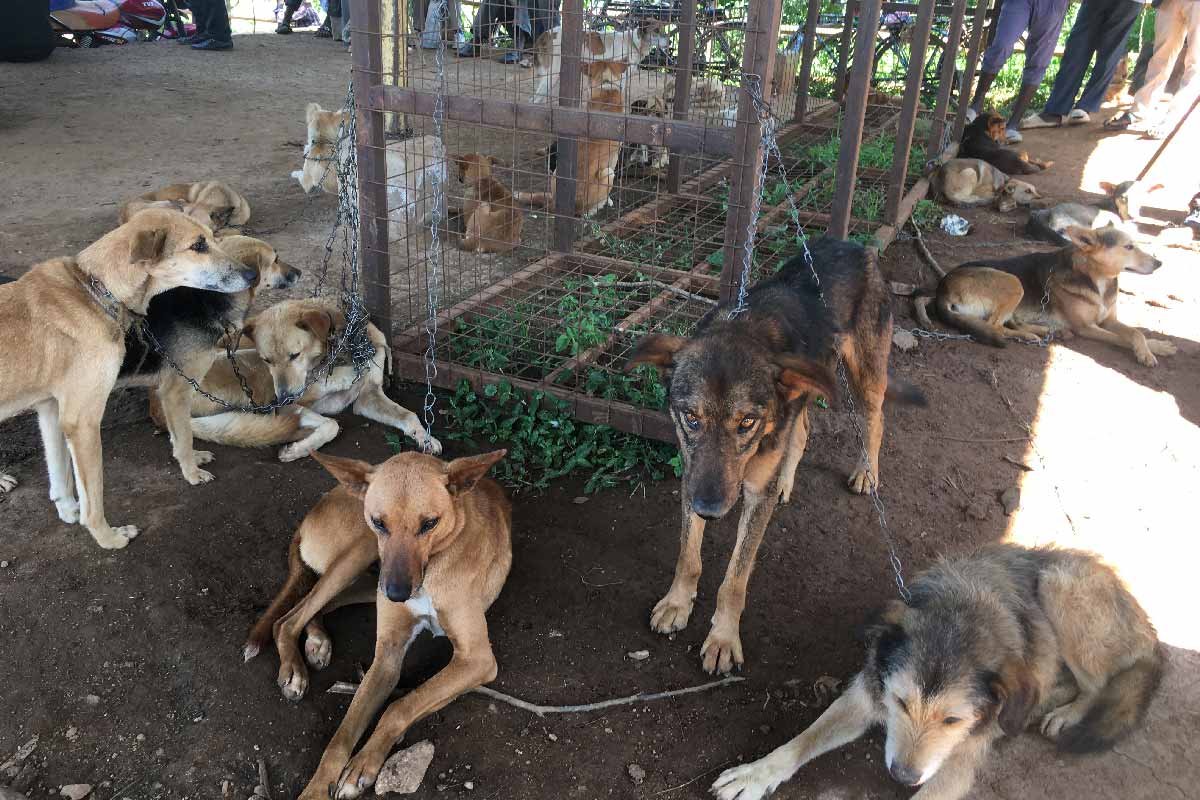
Under a metal roof on the eastern side of the thronged Lubao livestock market in Kakamega County, the dog market is underway.
It’s a bright Thursday morning. Chained-up thin dogs are barking, fighting, some are lying in repose. Their sellers rest in the shade or negotiate with prospective buyers. Once an agreement is struck, the seller unchains the dog and hands it over to its new owner, who now assumes the responsibility of vaccinating it against rabies.
That’s easy enough to do. A veterinary officer in a white coat, equipped with anti-rabies vaccine, waits at the market’s entrance. Each dose costs 350 Kenyan shillings (US$ 2.70), and earns the dog and his new owner a certificate of immunity, valid for one year.
The rabies-risk manager
Some 200 dogs pass through the market, which has been going since the 1950s, every single week. “The sellers come from as far as Bungoma, Uasin Gisu, West Pokot and Trans Nzoia counties,” says Jonathan Shiundu, the market’s new chairman. It’s part of Shiundu’s job to make sure that the market doesn’t become a transmission hub for the fatal rabies virus, which has been recently on the rise in Kakamega.
“We cannot allow unvaccinated dogs into the market, because that is risking lives of animals and human beings,” he says. While the virus can infect many species of animal, 99% of human cases are traceable to the bite or scratch of a dog. Sellers show up with vaccination certificates, but that’s not enough for Shiundu. “I tell buyers to start their own vaccination immediately to be on the safe side,” he explains.
45% of all hospital visits to Kakamega General Hospital were reported to be linked to dog-bites.
Rabies isn’t the only danger that Shiundu manages. The dog market is a hard place. There are cases when fights erupt, for instance between sellers over allegations of dog stealing. There are dog attacks – on people, or on smaller dogs. ”I have to handle such cases,” Shiundu says. That’s a complex task – but it always includes counselling bitten humans to begin post-exposure prophylaxis – a protocol that includes a sequence of rabies shots – as soon as possible.
The dog dealer
Freddy Namusasi has been buying and selling dogs for more than seven years. He is aware that rabies is a deadly disease in both humans and animals. He makes sure all the dogs he buys from homes are vaccinated before bringing them to Lubao market: “I do not take chances. When I get a dog, I call my vet to vaccinate it at my own cost.”
That’s a self-protective measure as much as it’s an act of social responsibility. Namusasi admits using violence to force fierce dogs to “submit”. Sometimes, beaten dogs retaliate. “The dog can end up biting me, so I can’t just take it for granted that it is free from rabies.”
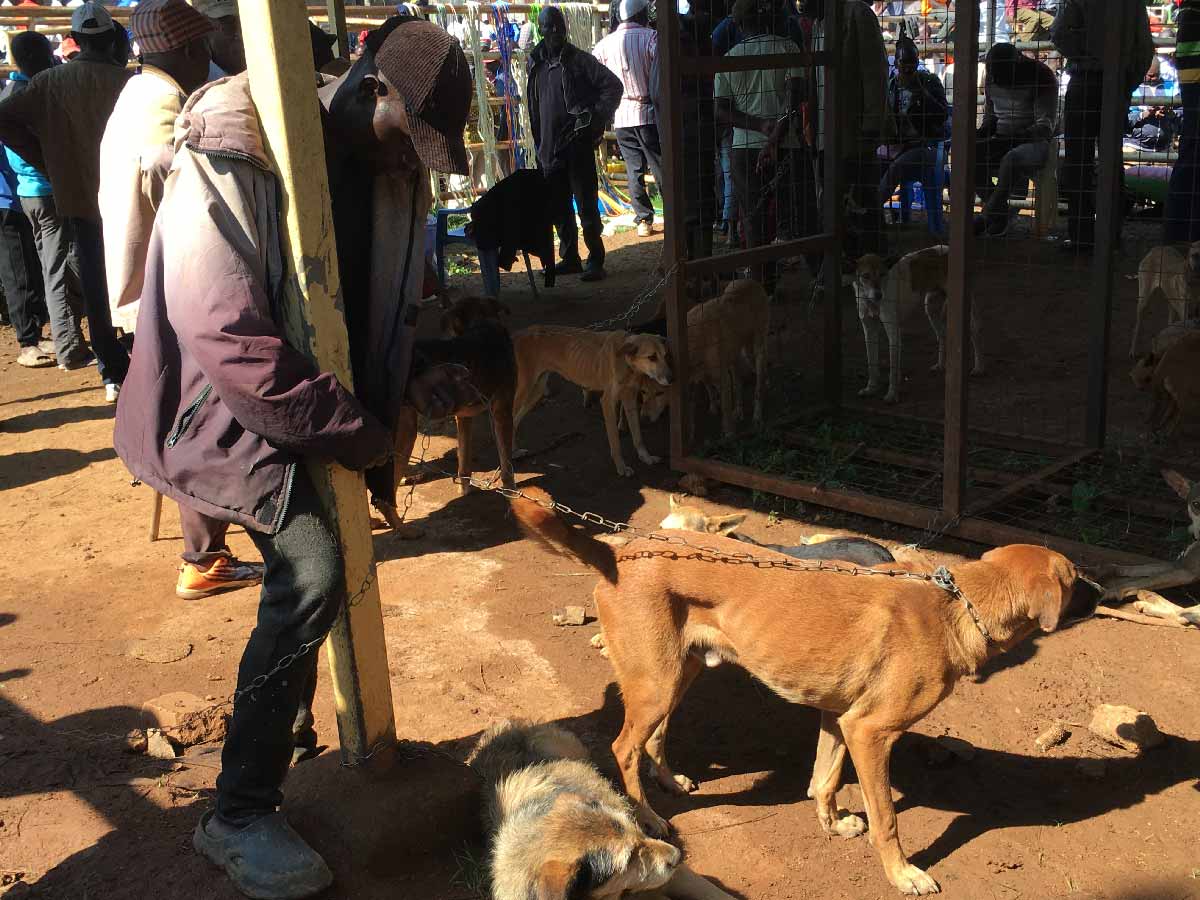
Managing transmission in the region
Risk management isn’t shouldered exclusively by the market. Dog trafficking through the market means that the surrounding areas have higher-than-average numbers of strays, increasing exposure risk. A striking 45% of all hospital visits to Kakamega General Hospital were reported to be linked to dog-bites in a 2024 study.
Beyond making post-exposure prophylaxis available, Kakamega County organises a free mass vaccination drive each year for both stray and pet dogs. Jane Tangala, a veterinary officer explained other livestock vaccines are administered at the owner’s expense, but not the rabies vaccine because the county government regards it as being a frontline measure for saving human lives, as well.
“We vaccinate dogs from three months old, and each dose expires after one year. That’s why we have an annual vaccination campaign, to renew the vaccination, and target the unvaccinated dogs.”
There is no definitive data on dog population in Kakamega County, but Tangala said that during the annual mass vaccination drives, some sub-centre vaccine outposts receive 1,000 dogs per day. Ecological studies have estimated that Kakamega has one of the highest dog-to-human population ratios in Kenya, at about one dog for every seven people.
Efforts have been made to control the dog population as a means of controlling the rabies risk. In 2023, for instance, the county arranged for veterinary surgeons to perform free spaying and neutering of more than 1,000 dogs and cats at Lubao dog market alone. But dogs produce between five and ten puppies in an average litter, and out on the streets, stray populations can grow fast.
In neighbouring Bungoma County, meantime, rabies vaccination is subsidised and costs 150 Kenyan shillings, (US$ 1.20) – much less than the cost for a rabies vaccine at the market. “We have a vaccination centre like Mitua in Tongaren-Bungoma, which brings farmers from Kakamega and Trans Nzoia counties as well,” says Emily Napwora, a government animal health officer in Bungoma. “Our target is to vaccinate all dogs, regardless of which county they come from.”
Have you read?
Risk persists
A 2025 study based on data from 2017 to 2023, estimated that on average, there were seven rabies cases in dogs reported each month countrywide. Across that entire period, a total of 480 human deaths from rabies were reported in Kenya, but the researchers emphasise that surveillance gaps exist when it comes to the disease in humans.
Indeed, Dr Kennedy Owuor, secretary for the Kenya Veterinary Association Busia branch, told local that rabies is commonly estimated to kill more than four times that number – that is, 2,000 people – every year.
Though a majority of people surveyed for a 2024 study on rabies prevention practices in Mumias sub-county, Kakamega, understood rabies transmission risks, just 44.2% of dog owners reported immunising them, which researchers understood as a contributor to the recent rise in rabies transmission. Encouragingly, however, people who were aware of the dog market in the area were more likely to demonstrate commitment to rabies control, suggesting that both the rabies education and rabies vaccination initiatives at the market were having a positive effect.
But while rabies continues to circulate at all, the threat it poses can grow quickly. Amid the floods of 2024, which killed 235 people in Nairobi and displaced 260,000, the Society for the Protection and Care of Animals (KSPCA) issued an alert: rabies cases were spiking. Disaster and displacement had brought more humans and more dogs into closer contact, and the virus was finding an opportunity to spread. The organisation reported that exposed humans were being treated, and quickly set up makeshift vaccination centres to bring the risk back under control.
More from Pius Sawa
Recommended for you


